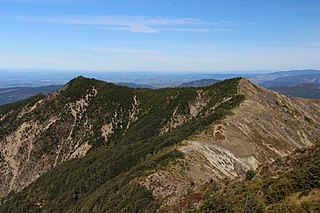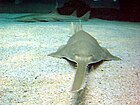
The national parks of New Zealand are protected natural areas administered by the Department of Conservation (DOC). The first national parks established in the country were all focused on mountain scenery. Since the 1980s the focus has been on developing a more diverse representation of New Zealand landscapes. The parks are all culturally significant and many also contain historic features. Tongariro National Park is one of the World Heritage Sites that are of both cultural and natural significance, while four of the South Island national parks form Te Wahipounamu, another World Heritage Site. There are currently 13 national parks; a 14th, Te Urewera National Park, was disestablished in 2014.

New Zealand is divided into sixteen regions for local government purposes. Eleven are administered by regional councils, and five are administered by unitary authorities, which are territorial authorities that also perform the functions of regional councils. The Chatham Islands Council is not a region but is similar to a unitary authority, authorised under its own legislation.

The Department of Conservation is the public service department of New Zealand charged with the conservation of New Zealand's natural and historical heritage.
This is a timeline of environmental history of New Zealand. It includes notable events affecting the natural environment of New Zealand as a result of human activity.

New Zealand has 44 marine reserves spread around the North, the South Island, and neighbouring islands, and on outlying island groups. They are governed by the Marine Reserves Act 1971 and administered by the Department of Conservation with assistance from the Ministry of Fisheries, New Zealand Customs and the New Zealand Defence Forces.

Protected areas of New Zealand are areas that are in some way protected to preserve their environmental, scientific, scenic, historical, cultural or recreational value. There are about 10,000 protected areas covering about a third of the country. The method and aims of protection vary according to the importance of the resource and whether it is publicly or privately owned.

The conservation status of a group of organisms indicates whether the group still exists and how likely the group is to become extinct in the near future. Many factors are taken into account when assessing conservation status: not simply the number of individuals remaining, but the overall increase or decrease in the population over time, breeding success rates, and known threats. Various systems of conservation status exist and are in use at international, multi-country, national and local levels as well as for consumer use.

Conservation in New Zealand has a history associated with both Māori and Europeans. Both groups of people caused a loss of species and both altered their behaviour to a degree after realising their effect on indigenous flora and fauna.

Conservation park is a type of specially protected status for land held by the Crown in New Zealand for conservation purposes. The status is set up under the Conservation Act 1987 and the parks are administered by the Department of Conservation (DoC).
Environmental law in New Zealand is an increasingly well defined body of national law that has a specialist court, The Environment Court of New Zealand, to decide related issues.

A wild river or heritage river (Canada) is a river or a river system designated by a government to be protected and kept "relatively untouched by development and are therefore in near natural condition, with all, or almost all, of their natural values intact."
Energy Efficiency and Conservation Authority (EECA) is a New Zealand government/Crown agency responsible for promoting energy efficiency and conservation.

The Conservation Act 1987 is New Zealand's principal act concerning the conservation of indigenous biodiversity. The Act established the Department of Conservation and Fish and Game, and complements the National Parks Act 1980 and the Reserves Act 1977.

New Zealand has several notable wetlands but 90% of wetland areas have been lost following European settlement.
Fish & Game New Zealand is the collective brand name of 12 regional fish and game councils and the New Zealand Fish and Game Council which administer sports fishing and gamebird resources in New Zealand. Fish and game councils are regionally autonomous bodies governed by elected fish and game councillors, who are elected every three years by adult full season license-holders across the respective region. The New Zealand Fish and Game Council is made up of one representative from each of the regional councils. Councils employ managers and staff, and the New Zealand Fish and Game Council employs a director; the role is currently held by Bryce Johnson.

The Ministry for Culture and Heritage is the department of the New Zealand Government responsible for supporting the arts, culture, built heritage, sport and recreation, and broadcasting sectors in New Zealand and advising government on such.
A national reserve in New Zealand is an area that has been designated as having national importance under section 16 of the Reserves Act 1977. They are administered by the Department of Conservation.

Eugenie Meryl Sage is a New Zealand politician and environmentalist. Since the 2011 election, she has been a Green Party list MP in the House of Representatives and served as the Minister of Conservation and Land Information and the Associate Minister for the Environment from 2017 to 2020.
The Whangarei Harbour Marine Reserve is a protected area in the North Island of New Zealand. It was established in 2006 and measures 236.5 ha over two sites. The students and faculty of the nearby Kamo High School played an important role in establishing this reserve.
Neptune Islands Conservation Park is a protected area occupying most of the Neptune Islands in South Australia about 55 km (34 mi) south-south east of Port Lincoln. It was established in 1967 principally to protect a New Zealand fur seal breeding colony. The conservation park was subsequently expanded to include the adjoining waters in order to control and manage berleying activities used to attract great white sharks. As of 2002, the conservation park is the only place in Australia where shark cage diving to view great white sharks is legally permitted.
















